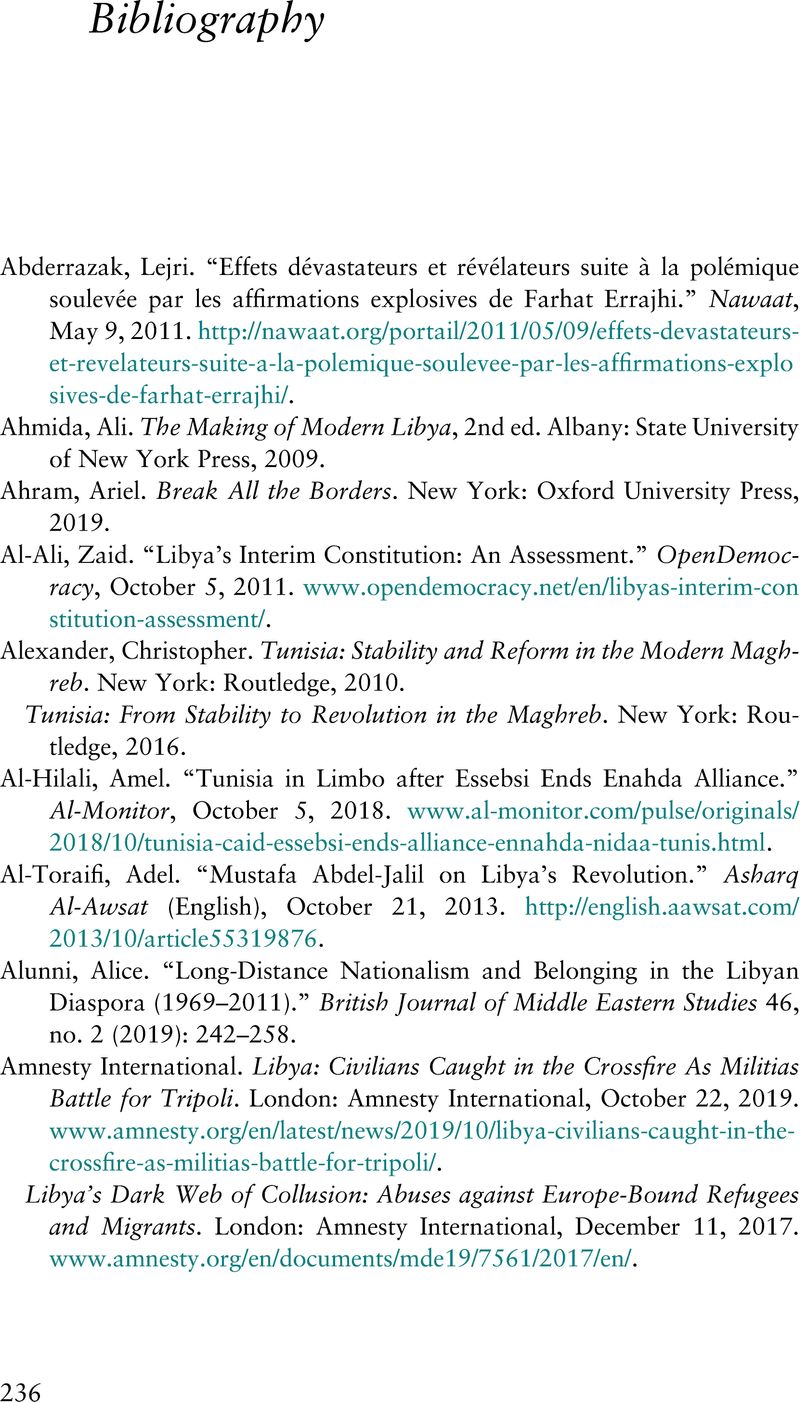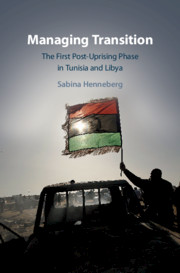Book contents
- Managing Transition
- Managing Transition
- Copyright page
- Dedication
- Contents
- Acknowledgments
- Note about Terms and Definitions
- Abbreviations
- 1 Introduction
- 2 The Tunisian Provisional Administration
- 3 Impacts of the Tunisian Provisional Administration
- 4 The Libyan National Transition Council
- 5 Impacts of the National Transition Council
- 6 Impacts of the Tunisian Provisional Administration and National Transition Council in Later Years
- 7 Conclusions
- Book part
- Bibliography
- Index
- References
Bibliography
Published online by Cambridge University Press: 03 December 2020
- Managing Transition
- Managing Transition
- Copyright page
- Dedication
- Contents
- Acknowledgments
- Note about Terms and Definitions
- Abbreviations
- 1 Introduction
- 2 The Tunisian Provisional Administration
- 3 Impacts of the Tunisian Provisional Administration
- 4 The Libyan National Transition Council
- 5 Impacts of the National Transition Council
- 6 Impacts of the Tunisian Provisional Administration and National Transition Council in Later Years
- 7 Conclusions
- Book part
- Bibliography
- Index
- References
Summary

- Type
- Chapter
- Information
- Managing TransitionThe First Post-Uprising Phase in Tunisia and Libya, pp. 236 - 255Publisher: Cambridge University PressPrint publication year: 2020

